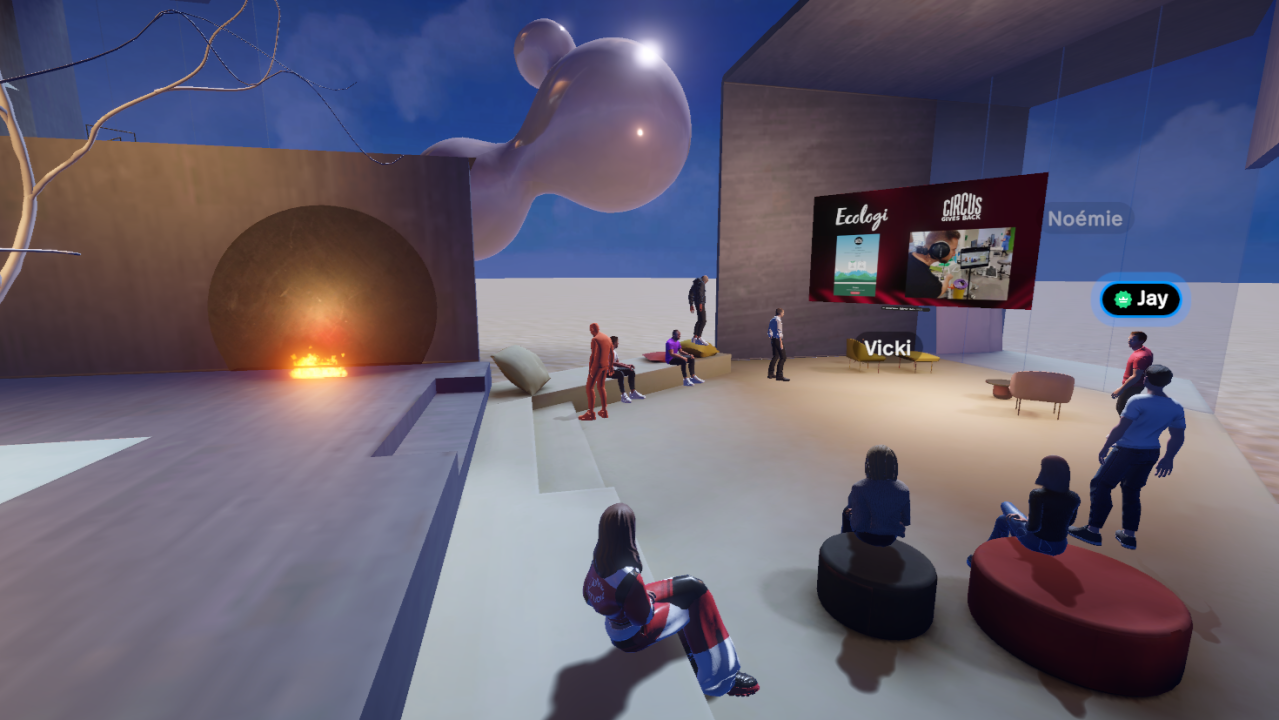Virtual reality (VR) and augmented reality (AR) are growing fast. The global market was worth $16.8 billion in 2023 and is expected to hit $230 billion by 2032. New tech, like generative AI and 5G, will help marketers connect with people in new ways.
In 2025, VR and AR will change how brands talk to customers. They will educate and show their value in new ways. Let’s look at the trends and how they’ll change marketing.
Hyper-Realistic VR Experiences
VR is getting more real thanks to better graphics. Brands can now create immersive worlds with Unity and Unreal Engine 5 tools. The hardware is also getting smaller, faster, and more powerful.
This means marketers can create unforgettable experiences that let users live the story, such as a VR showroom for cars or an interactive hotel tour.
Imagine a virtual event where you feel textures with haptic gloves. Or a campaign where you explore a world tailored to you. This personal touch builds loyalty and emotional connections.
AI-Powered VR: Intelligent Marketing Experiences
Artificial intelligence (AI) is changing marketing, and VR and AR are even more exciting. AI makes VR adapt to each user in real-time. This could change the difficulty of training simulations or create custom experiences.
AI helps marketers personalise experiences. Virtual environments can change based on what customers like. Think of a virtual shopping assistant or an AR booth that knows your job role.
AI in VR and AR enriches stories and makes targeting more precise. This helps marketers create content that really connects with people.
VR for Retail
Retail marketing is changing a lot. With VR, customers can explore virtual stores and get AI-driven advice. For example, instead of just trying on a dress, you could get suggestions for accessories or outfits.
This also helps reduce returns, which are a big problem for online shopping. 55% of online shoppers return items because they don’t fit right. VR lets customers see products in detail before buying, making them more confident.
Transforming Training and Events
VR is changing the game in the fields of engineering, healthcare, and education. It makes training and simulations engaging. Marketers can use VR to stand out in client demos, events, or recruitment efforts.
In healthcare, VR shows how doctors are trained in real-life settings. Brands can also offer virtual tours of products or facilities. This lets clients explore without leaving their desks.
VR is a big deal for event marketers. It lets them host virtual trade shows, conferences, and launches. This way, they can reach people all over the world. Imagine clients exploring a factory or testing a product from afar.
AR & VR Devices Proliferate
Until now, VR’s growth has been limited by the need for special hardware. In 2025, new devices like smart glasses and wireless headsets will make VR more accessible and bring immersive technology to the mainstream.
This change means marketers can reach more people with VR. Devices like Apple Vision Pro make AR and VR easier to use, opening up new ways to engage audiences across different groups.
The Rise of WebAR
WebAR, which offers AR experiences in a web browser, is set to grow significantly in 2025. This is great news for marketers who want scalable solutions.
Imagine a QR code on a flyer that takes users to a WebAR experience. Travel companies can offer virtual tours of destinations, and real estate marketers can let people explore properties from their phones.
WebAR makes it easier for marketers to add immersive experiences to their campaigns. It ensures their messages reach as many people as possible.
VR Accessibility and Inclusivity
Inclusivity is now a must, not just a nice thing. By 2025, VR will be key in making experiences for everyone. Features like voice recognition and customisable controllers are making VR more inclusive.
Marketers can now create campaigns that truly represent everyone. They can offer virtual experiences for those with neurodivergent conditions. They can also provide DEI training that lets users see things from different perspectives. This way, brands can show they care about inclusivity while engaging their audience.
Sustainability in VR Marketing
Brands are focusing on being green, and VR helps. It cuts down on the need for physical stuff. Virtual events can replace expensive, polluting ones, helping brands meet their green goals and save money.
For marketers, VR means offering eco-friendly options to clients and customers. For example, a virtual conference cuts emissions and reaches more people. It’s accessible from anywhere.
Final Thought
In 2025, VR and AR will change marketing. Brands will make campaigns that are more personal, immersive, and green. They’ll use advanced tech and accessible hardware to connect better with their audience.
As VR and AR get cheaper and easier to use, marketers will jump on it fast. The early adopters will lead the way in 2025 and beyond.
If you want to boost your marketing with VR and AR, contact us today or see our latest projects for ideas.
